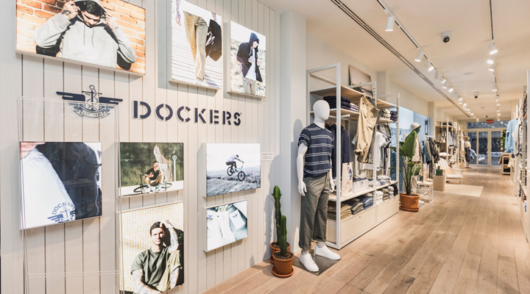Retail is booming in Asia Pacific, both online and offline. Some trends that were just evolving before the advent of Covid accelerated during times of social distancing and enforced store closures, pushing shoppers online. Since then, most of those trends have endured – or evolved further.
During the past 10 years, Qiping Sun, VP of Asia Pacific at LS Retail, an Aptos company, has witnessed significant changes in the Asia-Pacific retail landscape: the rise of e-wallets, the adoption of Software as a Service, the embrace of contactless service and self-checkouts, to name a few.
LS Retail is a technology company that offers comprehensive business management solutions to retailers and hospitality companies, serving almost 10,000 stores and restaurants across the region. The company’s sustained growth led to its recent opening of a new, expanded office in Malaysia to continue serving retail clients in the region. This milestone highlights LS Retail’s continuing investment and long-term commitment to its customers in Asia Pacific as it marks 10 years in the market.
Sun talked to Inside Retail about critical trends impacting retailers in Asia Pacific and beyond…
1 The rise of e-commerce and omnichannel retailing
For retailers, adopting omnichannel retail solutions – including an e-commerce presence – is no longer a luxury but an essential part of every business. With its popularity fuelled by the Covid-19 pandemic, online shopping has endured, albeit slowed down.
“Retailers without a unified online and offline strategy will find it challenging to address the market requirements and expand their business,” asserts Sun. “This is born out by the adoption of our e-commerce integration feature, which has also increased significantly in recent years.”
Technology that helps retailers manage all channels in a single, connected way enables them to serve customers across all touchpoints, including mobile and e-commerce platforms, with a consistent messaging and consumer experience.
“It is essential that retailers offer the same prices and promotions online and offline, and stock visibility online and click-and-collect are services consumers now expect.”
2 Retail formats are evolving
Sun says the retail formats and where people shop have changed in the past five years. While consumers have returned to brick-and-mortar stores, most now shop online and offline.
Sun believes that shoppers seek out brick-and-mortar stores for unique and immersive experiences.
“Consumers now have more choices, whether in physical stores or online. Online has a disadvantage when it comes to experience because, for certain products, you need a sense of attachment – to see a product and feel it.”
Within the physical retail space, some retailers are changing their offer to focus more on experiences and less simply on products. FamilyMart, for example, is opening cafes in some markets so people can grab a coffee after topping up on essential groceries.
3 Contactless shopping and self-service are more popular
Contactless shopping and self-checkout solutions became popular due to social distancing and are now a standard technology driven mainly by labour shortages and changing consumer behaviour. Sun says many LS Retail customers or prospects are now looking at some form of contactless shopping or self-service features, especially supermarkets, convenience stores, quick-service restaurants, and casual dining.
Years ago, Don Don Donki trialled self-checkout in some Singapore stores but later converted them to manned tills because customers took too long to complete transactions. Some seemed uncomfortable using the technology.
Now, says Sun, most consumers are used to self-service, and the retailer has another challenge: finding sufficient staff to man them.
“Four years later, they are converting half back to self-checkout. After Covid, people are quite comfortable using them.”
He says grocery retailers, supermarkets and department stores are adopting the automated system to give customers more freedom.
4 Consumers are embracing e-wallets and digital payments
The adoption rate of e-wallets and digital payments skyrocketed during the pandemic, fast-forwarding many Asia Pacific governments’ digitalisation initiatives. Consumers today in most Asian economies can make purchases anytime, anywhere, using their mobile phones.
“The adoption of e-wallets and digital payments are vast now compared to 10 years ago, when ‘Chip-and-PIN’ and PCI were prevalent.”
LS Retail has a plugin solution called LS Pay that works with payment platforms to enable retailers to accept payments across all sorts of e-wallet and digital payment solutions, from Apple Pay to QR. LS Pay supports multiple payment service providers, making this a considerable option for multinational retailers to adopt.
5 Personalisation and AI are increasingly important
Sun says that today’s consumers have higher expectations of a personalised shopping experience than ever. They want to be recognised and served based on their preferences, expecting a seamless shopping experience across different channels.
That trend is driving retailers to increase their adoption of analytics and AI to provide consumers with a personalised shopping experience, enhancing customer satisfaction and loyalty.
AI is a journey, Sun says. Right now, he hears “a lot of hype and confusion” around the difference between user-generated content – where AI helps create marketing content or imagery – versus its use to interpret data and make recommendations to brands around inventory, product range or marketing priorities.
“People are talking too much about user-generated content, but what’s the point if you can’t get your inventory right? That’s fundamental from our point of view. Inventory is always the key. So are the procurement process, budgeting, and then your merchandising planning.”
Behind the scenes, he sees AI playing a growing role in recommending products based on assessing a customer’s past search, view and purchase behaviour. And in creating and tailoring promotional campaigns.
“Every retailer has their way of managing promotions, but how do you get real impact from them? Whether to move slow-moving items or use vendor discounts, the analysis for the promotions always pulls in customers, so that’s another area in which retailers can use AI technologies.”
The third role he sees AI impacting retail is in multiple ways. For example, Microsoft Dynamics Business Central’s Copilot provides writing assistance for authoring marketing text in e-commerce.
6 The adoption of SaaS solutions is gaining momentum
In recent years, the adoption of Software as a Service (SaaS) solutions has increased exponentially. In the past, many retailers were content with their outdated solutions fulfilling basic business operations. However, when the pandemic prevented physical stores from operating, retailers started to feel the pinch of not having a modern retail management solution and the subsequent loss of business.
On the contrary, their competitors with more advanced SaaS solutions were able to adapt to and thrive in the new retail environment easily. “We have been receiving a lot of inquiries for a comprehensive, secure and flexible retail management solution that can address the ever-changing market trends, provide retailers with insights, and support their business strategy, including e-commerce and omnichannel,” recalls Sun.
There are several reasons for the rising adoption of SaaS to replace in-house legacy systems. Investors in retailers appreciate SaaS because they can see it adds value to the business by not tying up capital. As the software is constantly updating automatically, businesses remain on the latest technology without needing to spend time or money on upgrade projects.
SaaS also offers scalability and cyber security advantages. “We use Microsoft as a platform, and Microsoft has very strict security protocols and redundancies,” says Sun. “In the past, it did not matter how much a retailer did on-premise or off-premise; you just bought a server. But when you grow a business, that will never be enough. You’re constantly buying additional stuff and adding new IT capabilities, and you remain at risk of cyber-attacks. So we see an increasing trend towards SaaS and cloud services.”
7 Cybersecurity is a significant concern for retailers
With the boom in online shopping, retailers have become a primary target for cyber-attacks, given the enormous amount of customer data and sensitive information collected. Retailers on older and on-premise solutions are susceptible to cyber-attacks given the security vulnerability of their infrastructure weaknesses or the third-party applications or platforms connected to their core platform.
Security is a significant advantage of the Microsoft Dynamics 365 Business Central SaaS platform. Microsoft makes significant investments in cyber security. For retailers, this means they can adhere to international standards, be safe from even the most advanced threats and malware, and not worry about vulnerabilities. When their data is stored in the Microsoft cloud, Microsoft manages all the monitoring and responses.
- Using Microsoft Dynamics, LS Retail’s software is the end-to-end building block for retail and hospitality, from head office to retail back office to the point of sale. For more information, visit the website.






